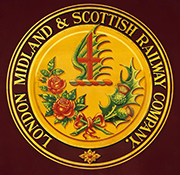

This site uses non-intrusive cookies to enable us to provide a better user experience for our visitors. No personal information is collected or stored from these cookies. The Society's policy is fully explained here. By continuing to use this site you are agreeing to the use of cookies.
Developments in signalling and telecommunications over the 23 years have been remarkable. A high standard of safety for passengers was achieved; between 1923 and 1945, for each fatal casualty due to accidents to trains, passengers travelled 1,136,000,000 miles.
An early outstanding feature of signalling development was the change from red to yellow in the lights and arms of all "distant" signals, thereby bringing more clearly and quickly to the attention of drivers the cautionary nature of the signals. The upper quadrant semaphore signal was also introduced, enabling the signal arm to be lower and easier to see. A further step was the widespread addition to electric track circuits on the main lines and at stations and junctions. A track circuit is a device by which a train occupying a section of line is automatically protected by signals. The section is insulated and electric current introduced into the rails and the wheels of a train upon them lock the signals, which cannot be released while a train or vehicle is in the section.
The extension of electrical power supplies enabled further progress to be made in signalling. Areas and junctions under the control of one signal box have been extended with increased safety and decreased cost, and in the years 1931-1935 this resulted in the abolition of 190 signal boxes, with improved efficiency and a decrease in costs of £60,000 a year. Colour light" distant" signals have been introduced on important lines. These signals are fitted with powerful electric lights and controls, to enable drivers running at high speeds to pick them out quickly, especially in bad weather and fog. At these signals, fogmen are not required. In place of a signal box or to enable trains to run closer together, a considerable number of intermediate block-section signals have been provided. These consist of independent "home" and" distant" light signals operated electrically from adjacent signal boxes. Electricity has also enabled points to be worked at long distances from signal boxes, and many installations of this type are in use.
The advantages of colour light signals over semaphores are great at large stations and in congested areas, and at nine places alone a total of 922 colour light signals and 1,059 track circuits have been introduced in recent years.
An interesting power installation has been made at Wigan, the signals being worked by small thumb switches from a panel showing the geographical layout of the area under control. A like arrangement has been made at Kilburn where a maximum of 17 trains are simultaneously under the control of one signalman with special automatic operation of signals. For several years the company has been successfully experimenting with an automatic system of train warning control, which only war conditions has delayed. While no device can completely eliminate the possibility of .human error or interference from the elements, the company is continuing the scientific researches and experiments which have already greatly reduced the risk of accident?
Site contents Copyright © LMS Society, 2024

May 10th, 2024
Site contents Copyright © LMS Society, 2024